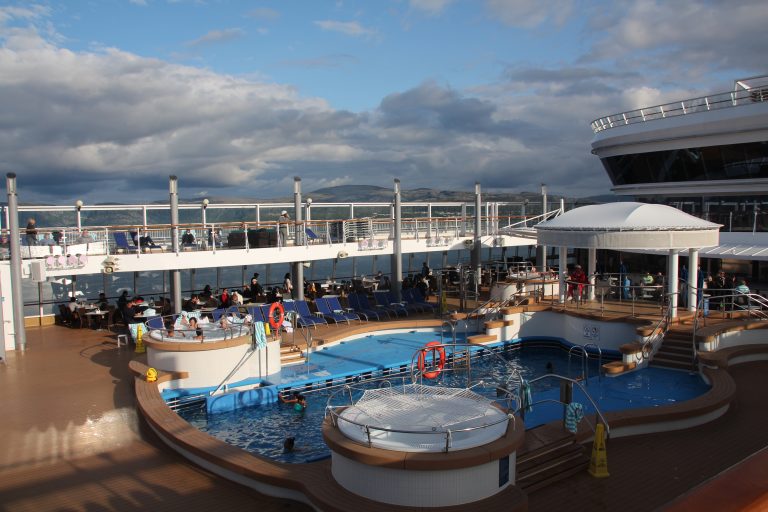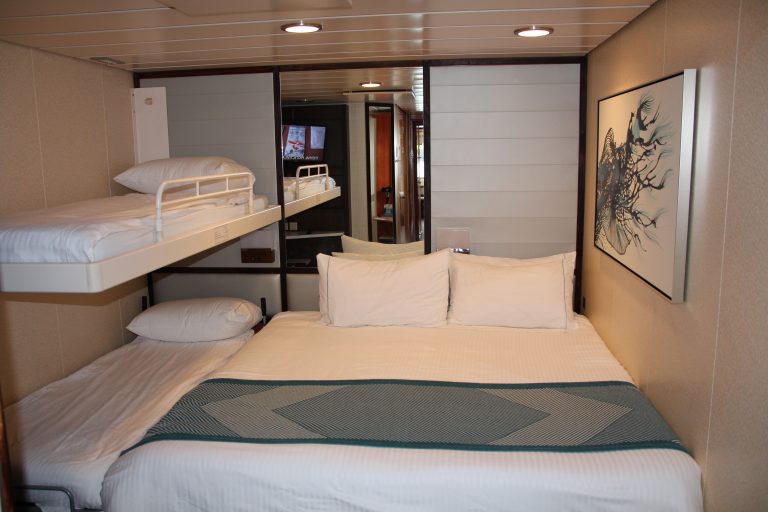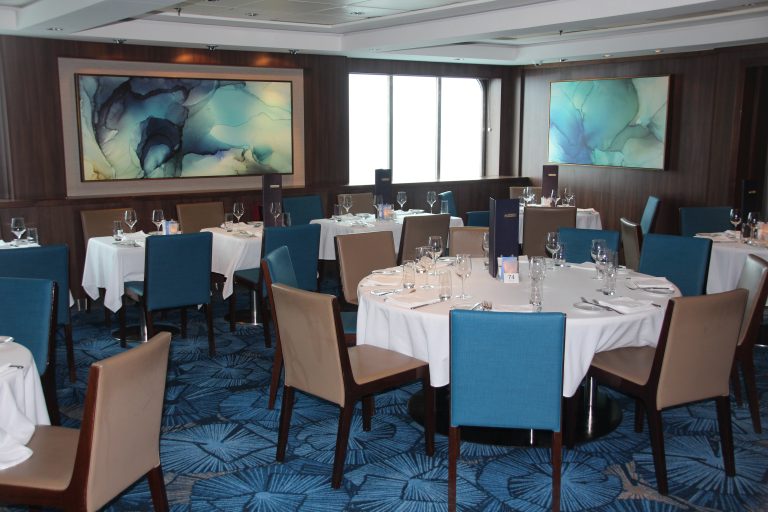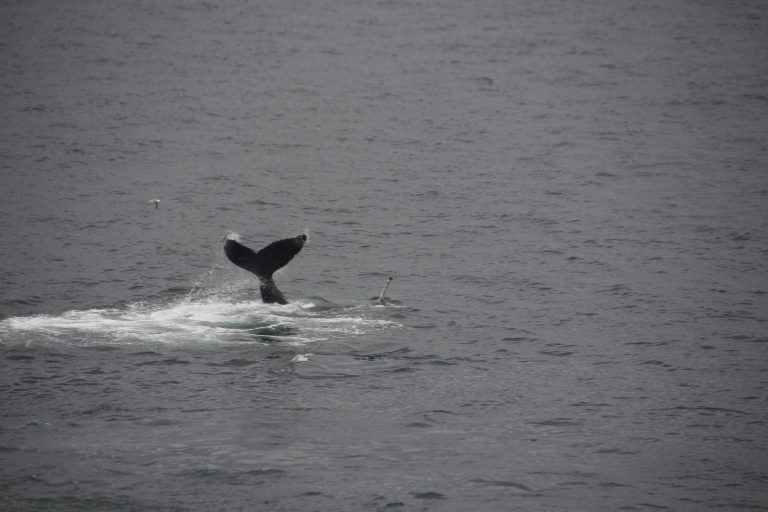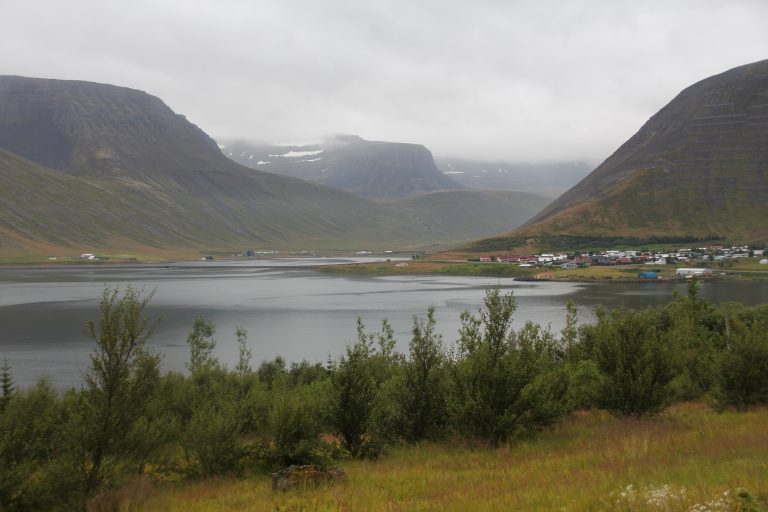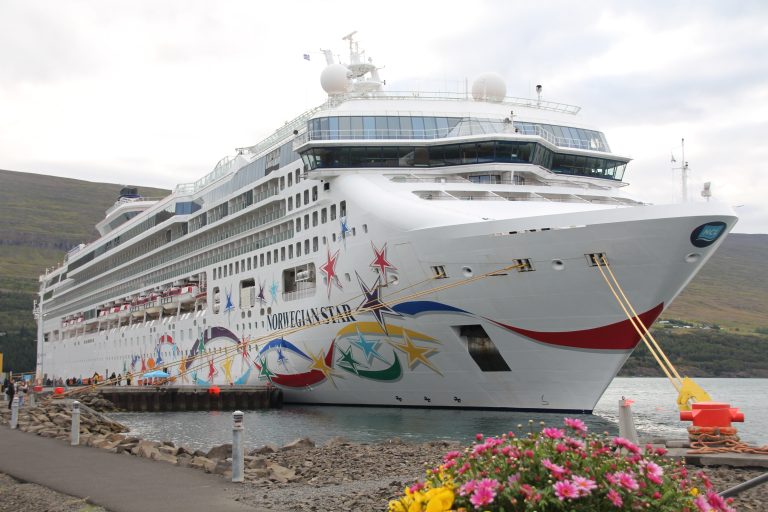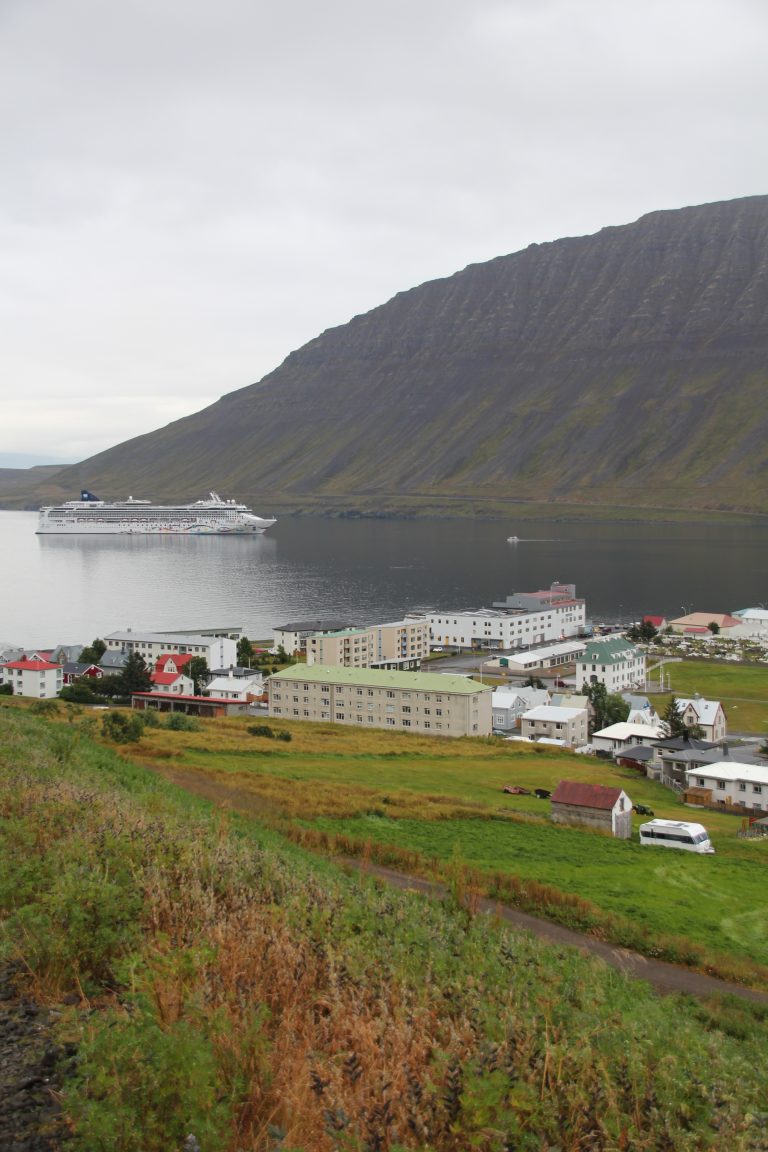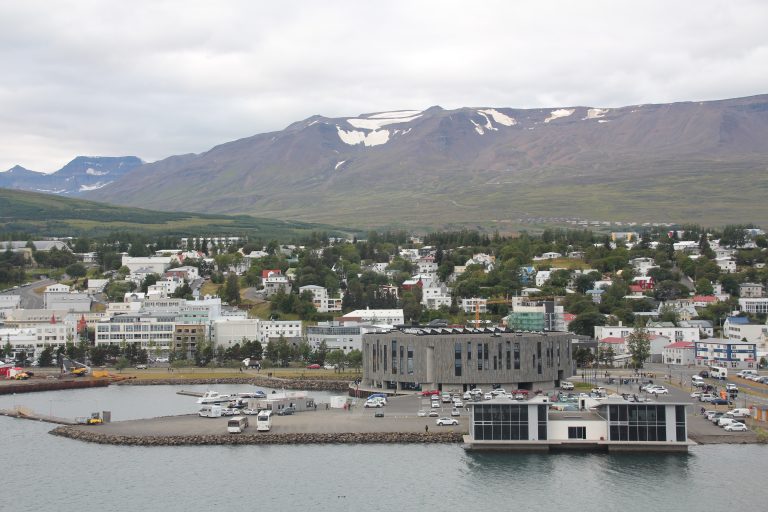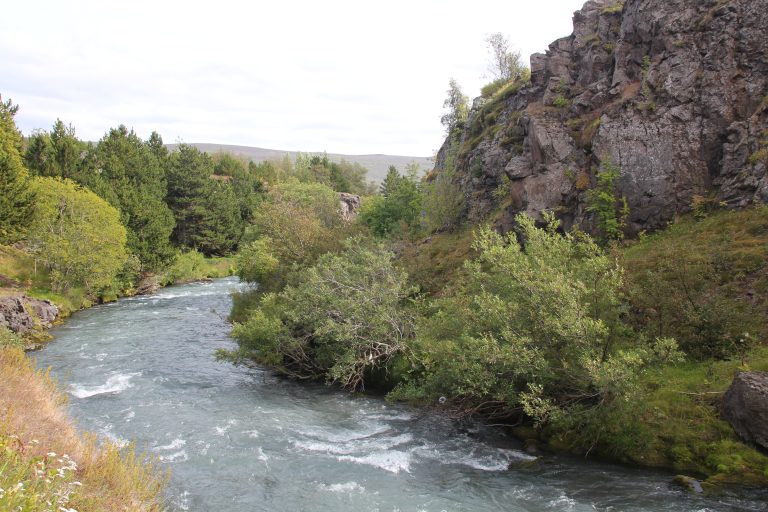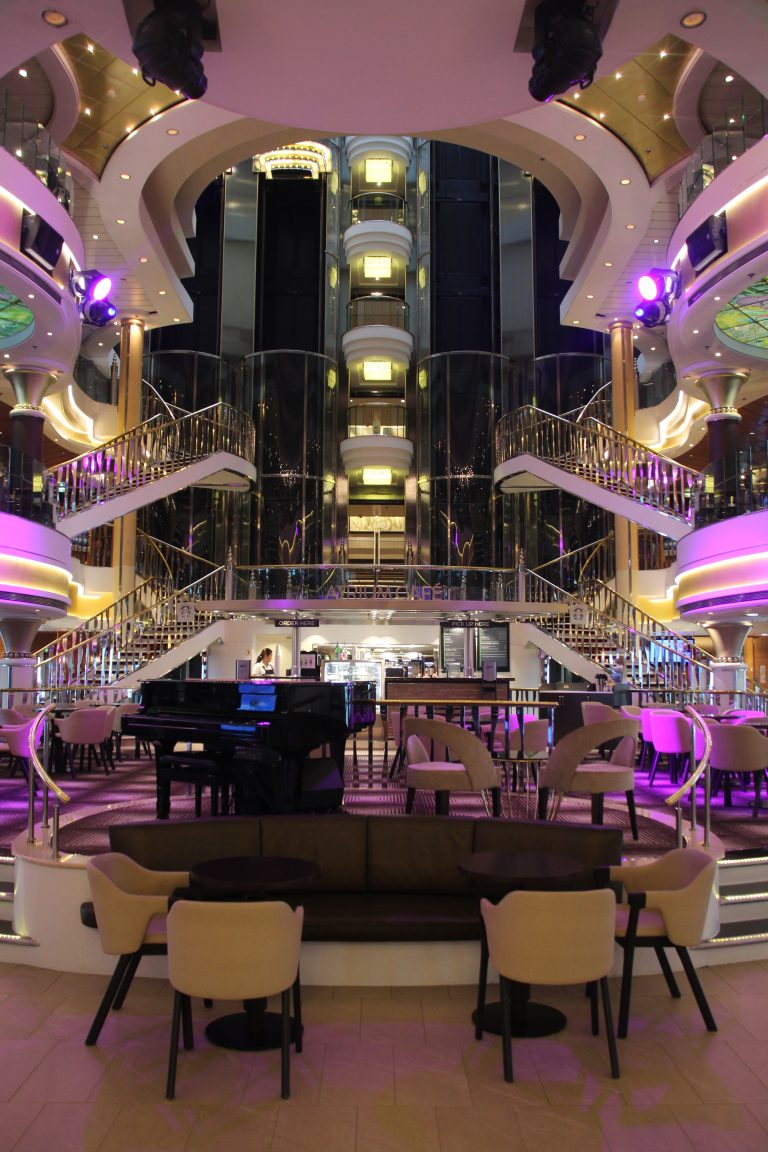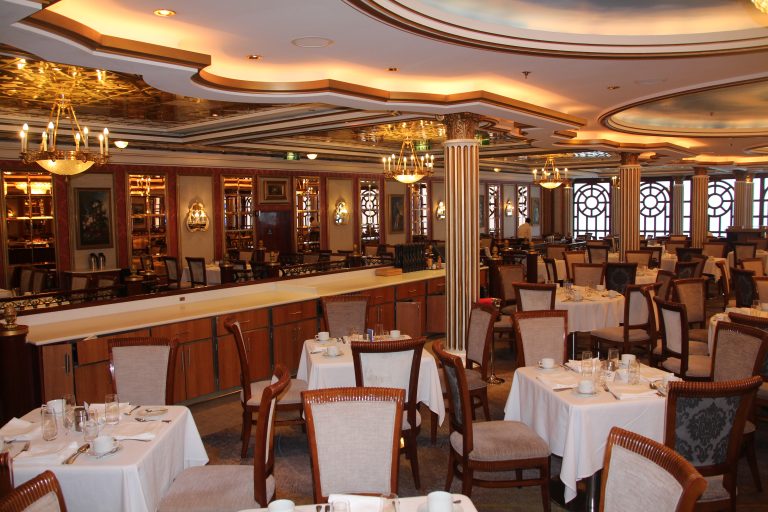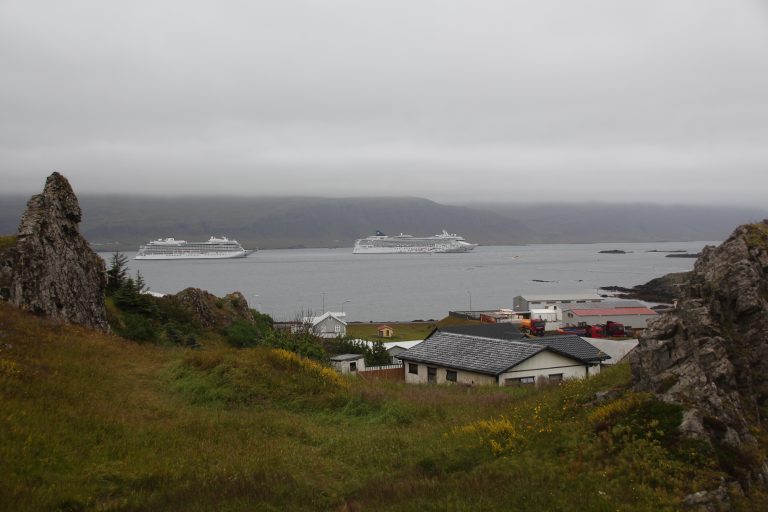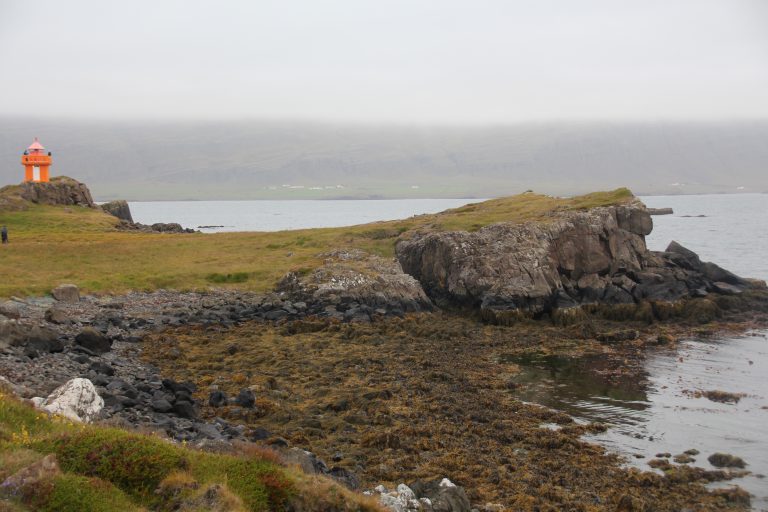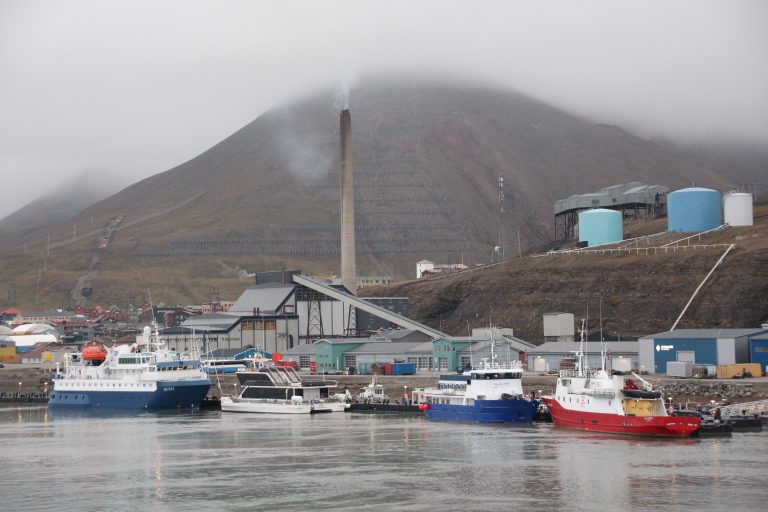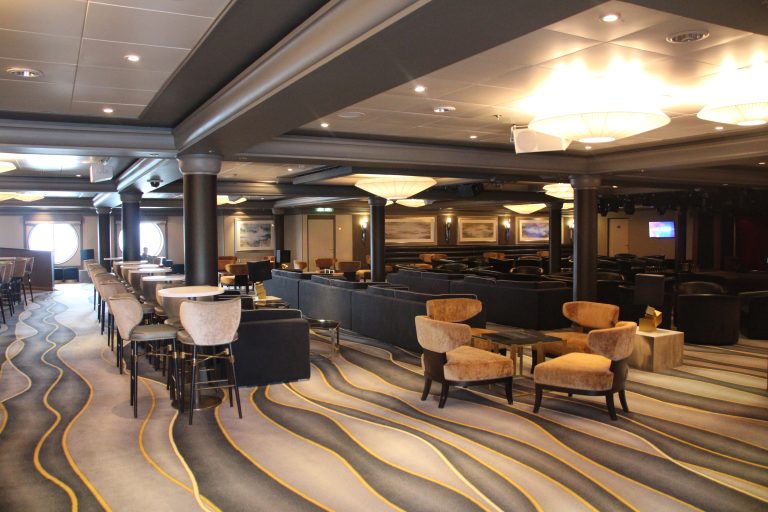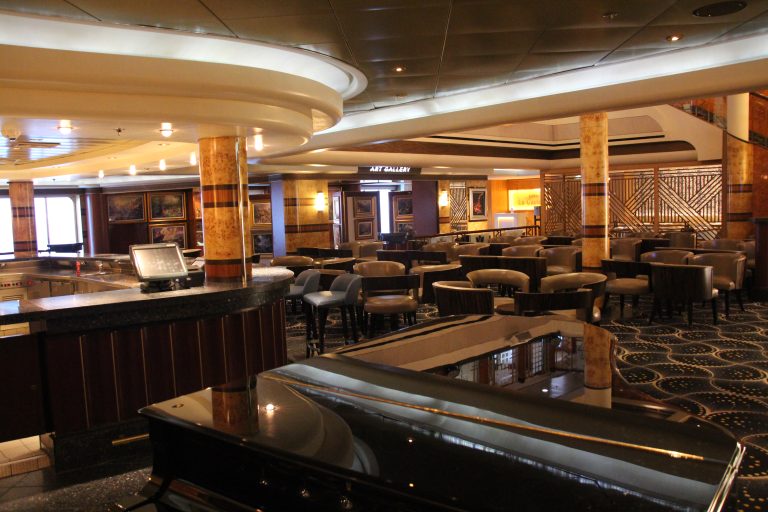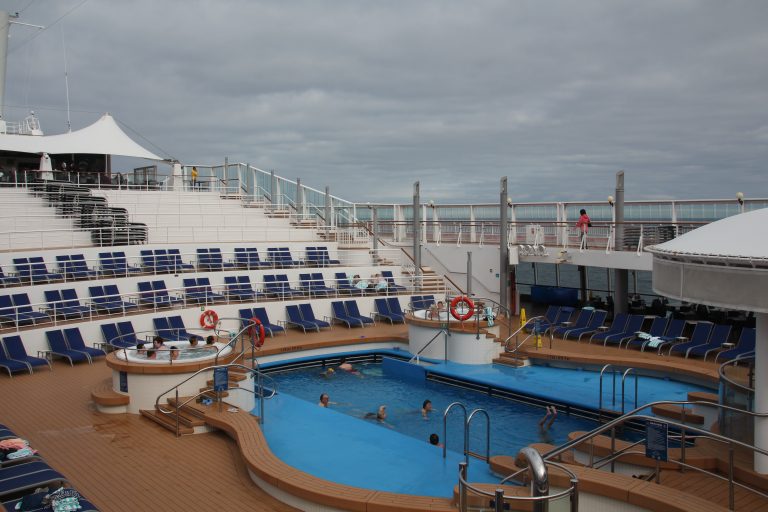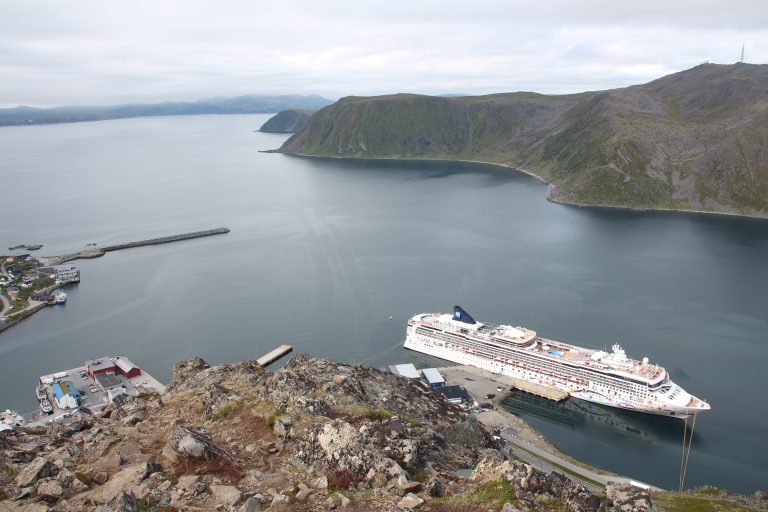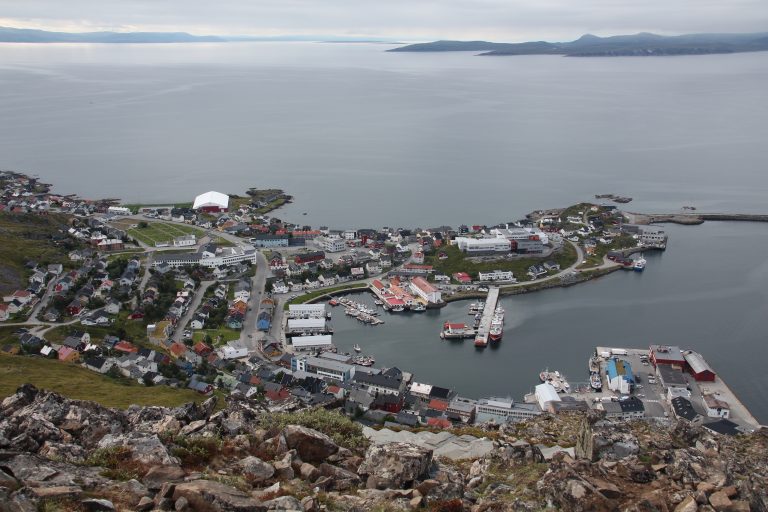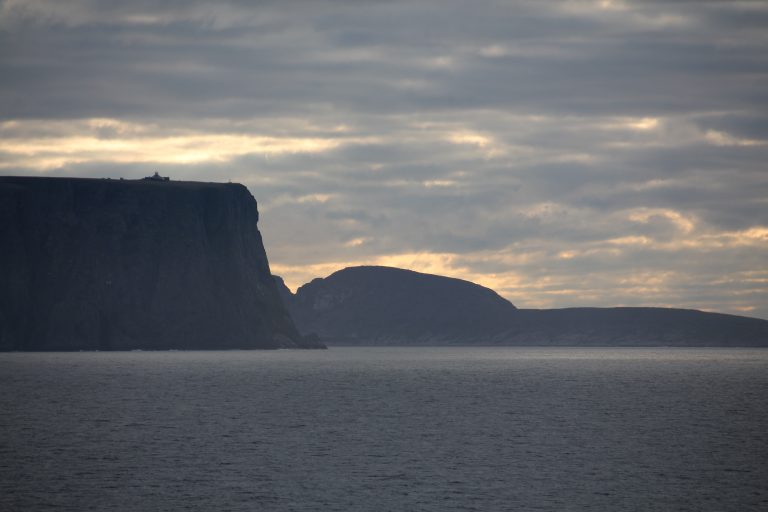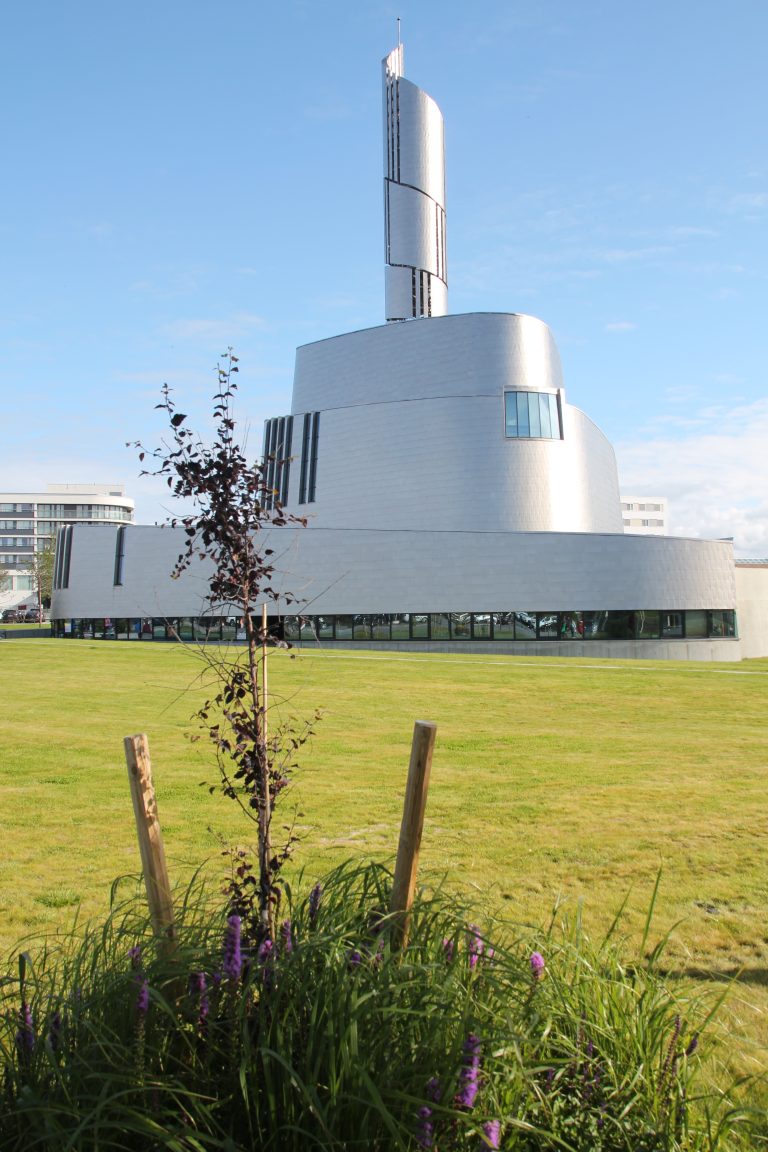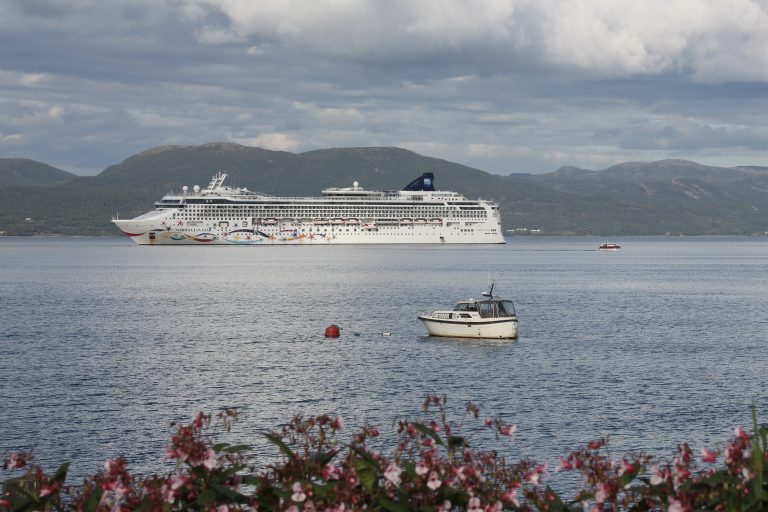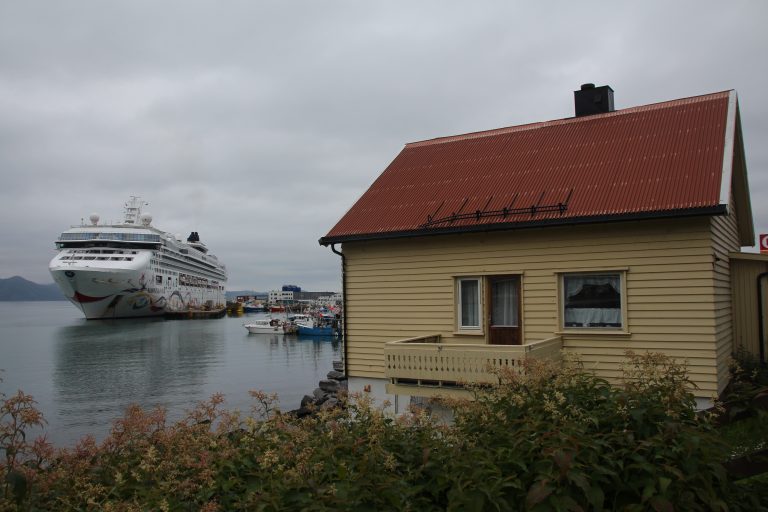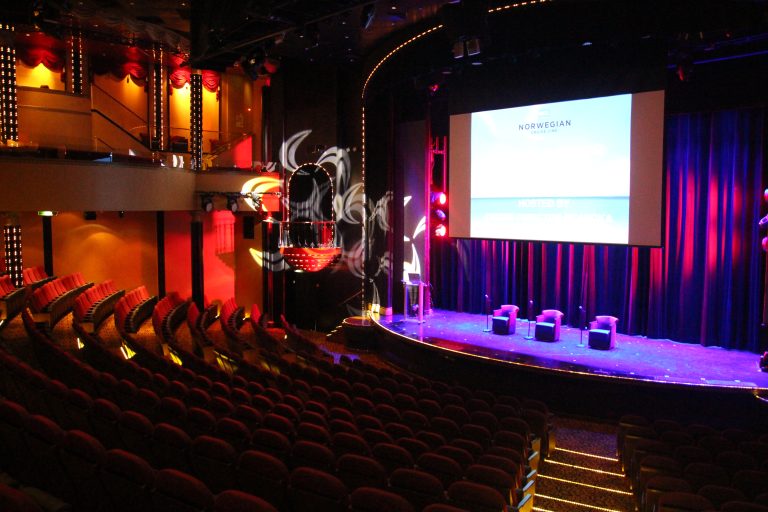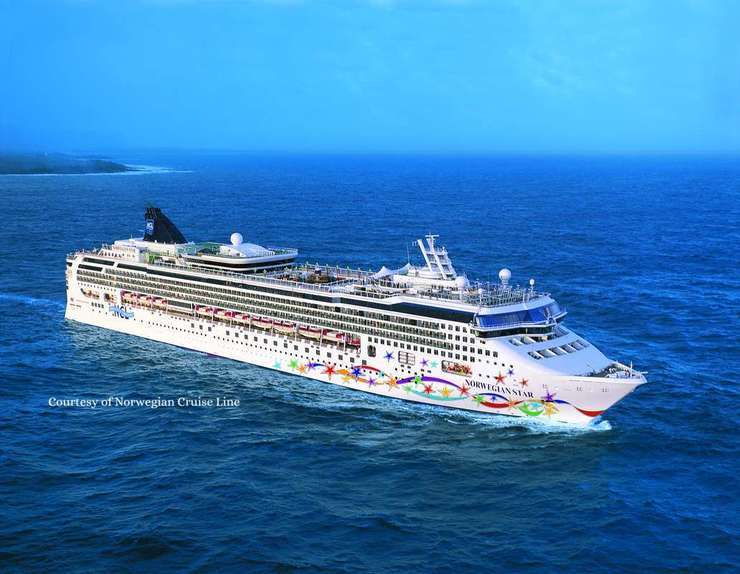Norwegian Star: “Freestyle” Cruise in the Far North
Embark on a summer cruise to the far north of Europe with Norwegian Cruise Line, experiencing thrilling natural wonders beyond the Arctic Circle.
On the deck of the Norwegian Star, the weather leaves no doubt that we are far north. The temperature doesn’t surpass 15 degrees, and a dense gray sky looms over Reykjavik, occasionally showering rain. The pool deck’s band plays Latin rhythms, but the pool remains empty, and no one feels like dancing to Caribbean music. Passengers, instead, wrap themselves in thick sweaters and jackets as they explore their home for the next twelve days. A total of 2,412 passengers embark on a journey around Iceland, Spitsbergen, and the North Cape, including 840 Americans, 417 Spaniards, and 134 Germans—an eclectic mix of guests.
Norwegian_Star_Pooldeck
Cabin 8657 proves to be compact, as expected, having traveled on the “Norwegian Jade”, a sister ship of the “Norwegian Star,” twelve years ago. Between the queen-sized bed and the bunk bed, there’s hardly any space, making it more of a three-person bed with a bunk. The decor is unique, with limited storage space for four people. Even the electrical outlets (especially the European ones) are scarce, a known issue on cruise ships that have been in service for some years. The fact that the “Norwegian Star” is an American ship is evident not only because half of Deck 6 is occupied by a casino and an art gallery but also because the public spaces on board are air-conditioned in an “Arctic” manner. While this may be pleasant during a Caribbean cruise, it doesn’t contribute to comfort when it’s cold both on board and ashore, as in Iceland. So, it’s better to keep the warm sweater you brought specifically for land excursions.
Norwegian_Star_Innenkabine
As the “Norwegian Star” sets sail in the evening, the weather hasn’t improved. Reykjavik‘s silhouette fades away to port in the midnight (almost) sun darkness, while rain clouds approach again from the mountains to starboard. The company’s “Freestyle Cruising” philosophy allows choosing from five complimentary and six specialty restaurants, with the flexibility to dine whenever during opening hours—a valuable advantage compared to competitors with strict meal schedules and closed restaurant doors shortly after. Our choice for the first night is the Aqua restaurant, mid-ship on Deck 6. It’s the smaller of the two main dining rooms, but the atmosphere is pleasantly calm despite being fully occupied.
Norwegian_Star_Aqua_Restaurant
At night, the “Norwegian Star” begins its clockwise circumnavigation of Iceland. The first stop is the small port of Ísafjörður, in the extreme northwest of the island. Ísafjörður proves to be an interesting place for enjoyable walks, both in the (quite small) town itself and along the fjord’s shoreline. Especially noteworthy is the 700-meter-high rocky wall of Eyrarfjall, which practically isolates Ísafjörður from the rest of the world. There are also hiking trails of various difficulties along the wall. Ísafjörður is still heavily influenced by fishing; its position as the northwestmost outpost of Iceland makes it ideal for this activity, although the importance of the fishing industry has decreased in favor of other commercial sectors. By the way, the “Norwegian Star’s” location is so perfect that it’s possible to return on board for lunch and easily go ashore again.
Isafjordur
Isafjordur
The last tender departs at 4:00 PM, and an hour later, the “Norwegian Star” sets sail again—out of the fjord and east along the Icelandic coast, almost exactly along the Arctic Circle. The clouds are low in the early evening, very low. They envelop mountains and islands and sometimes float directly above the waves. Or is it fog? The scene is wonderfully mystical: no photo can capture the atmosphere, no words can describe the view. It’s precisely for experiencing these moments that Iceland was chosen, not Mallorca, Rhodes, or Antalya as a summer destination.
After dinner (this time at the Versailles restaurant), there’s still an hour before the 9:00 PM show. It’s time for a post-dinner stroll on the deck, to have tea (okay, and maybe a piece of cake) in the buffet restaurant, or to wander around the ship. Something happens in one of these moments. “There’s a jumping whale on starboard,” suddenly announces the public address system. Anyone near the starboard railing heads there, and we’re lucky too: we not only get to observe the whale during some of its majestic leaps but also manage to capture them with the camera. We identify it as a humpback whale, of which there are many in these waters during the summer. Another magical moment, and yet we’ve been on board for just over 24 hours.
Norwegian Star – Alta
Norwegian_Star_Isafjordur
Walks with and without Cats
The next morning, upon waking up, the “Norwegian Star” finds itself in the port of Akureyri, Iceland’s “capital of the North.” Akureyri proves to be larger than initially thought. The city map is designed in a schematic manner with strictly parallel and transverse streets, except for the harbor, where the terrain steeply descends towards the water, revealing picturesque winding alleys. Another gem is the beautiful botanical garden located a few streets behind the “Akureyrakirkja,” whose modern architecture (the church dates back to 1940) barely integrates into the city’s silhouette. In the city park, a stray cat follows us, and getting rid of it is not that easy.
A second walk on land takes us along the Glerá River, winding through a landscape that resembles a miniature reproduction of Iceland’s wild interior. With waterfalls and rapids, the river meanders between rocky, wooded shores on both sides. The Glerá is so turbulent that a hydroelectric plant was once operated here, and its remains are still visible on the riverbank.
Akureyri
Akureyri
As our ship sets sail again in the evening, the onboard music program unfolds. In the “Proof” Whiskey Bar, the “Karaoke Superstar” is sought, while in the Bliss Lounge, which later transforms into a disco, guests dance to “Hot Stuff” and other disco hits. Guests who simply want to play cards or board games have a bit more difficulty on board. The library is silent to avoid disturbing readers; in the Internet Café, the music from the atrium one floor below penetrates, and in the bars, the tables are naturally too small to accommodate more than two cocktail glasses. Of course, players do not enjoy priority with cruise companies because playing does not generate revenue. The fact that, in their difficulty, they turn the empty buffet restaurant into a game room while the area around them is already being diligently cleaned is probably not the best for them.
Norwegian_Star_Atrium_
Norwegian_Star_Versailles_Restaurant
On the fourth day of the journey, the “Norwegian Star” heads towards Djupivogur in the east of the island. The weather is forgettable: thick gray clouds, barely eight degrees (air and water alike), and a persistent drizzle that can spoil the day in Iceland, called “summer.”
For most passengers, Djupivogur is a starting point for bus excursions to glaciers, waterfalls, and hot springs in the spectacular east of Iceland. However, those with suitable footwear can take wonderful walks in the surroundings of the place (this time without the cat). Moss-covered plains alternate here with rocky heights that suddenly end in a gorge or lead to pebble beaches covered with seaweed. The Baedeker guide dedicates at least five lines to Djupivogur, describing the place as “a charming fishing village with colorful houses and a small marina.” The boats could be yachts, fishing boats, or small ferries; it’s often challenging to distinguish them accurately. Perhaps they are all three things. Seabirds soar in flocks over the bay, and seals and dolphins are said to enjoy the sea off the coast. This is what one expects from Iceland.
Djupivogur
Djupivogur
In the evening, we head to the theater, where Benjamin Moss’s performance awaits us. Moss gained recognition in 2022 on the British version of the singing show “The Voice,” but he has been performing on cruise ships since turning 17. His voice and interpretations of songs by Ed Sheeran, Elton John, and Don McLean are extraordinary, even though he is currently suffering from the fact that a “large German airline” lost his beloved guitar during the journey from London to Reykjavik. However, as a true entertainer, he talks about it with humor and compensates for the absence of the instrument with piano performances or particularly heartfelt playback.
Svalbard
After two full days of navigation, on the seventh day of the journey, the “Norwegian Star” reaches Longyearbyen in Svalbard, the northernmost point and simultaneously the highlight of the trip for many passengers. Many guests got up early to witness the entrance into the fjord and docking in the old mining colony. But those expecting blue Arctic skies, the presence of icebergs, and a polar bear mother with cubs will be disappointed. Low clouds envelop the coast. The shore is a blurred strip of brown and green with no signs of civilization or animal life, and there’s no sign of ice either. Even Longyearbyen itself is not exactly a sight for sore eyes. Remains of mining equipment mix wildly with corrugated metal sheds, prefabricated houses on stilts, and snowmobiles of all kinds, of which it is unclear whether they are parked along the gravel next to the port runway or if they have been left there forever.
Even a stroll through Longyearbyen itself is quick, as the place actually consists only of two parallel streets, with some outdoor equipment shops and the local supermarket. However, since the “Norwegian Star” stays in Longyearbyen until midnight today, there is time for a third and fourth onshore stop on the same day. Only the anticipated boat trip in one of the surrounding fjords will not happen: the corresponding ships are either booked well in advance or have been directly occupied by NCL for today.
Longyearbyen
Norwegian Star
The “Norwegian Star” was not originally planned for the aforementioned American cruise line. When the keel was laid at the Meyer shipyards in Papenburg in June 2000, it was intended to operate for Star Cruises, at that time the parent company of NCL, conducting casino cruises in the Far East. However, for this purpose, the “Superstar Libra,” as it was called, was a bit oversized. So, together with the “Superstar Scorpio,” its one-year-younger sister (now the “Norwegian Dawn”), it was transferred to the American subsidiary, where it has remained since. However, it has undergone several modifications and renovations that have not made the ship more beautiful, practical, or better. The bright atrium with its colorful flowers? Replaced by dark windows and benches. The colorful floor of the Garden Café? Changed to dull light brown vinyl click flooring. The special restaurant “Le Bistro” with its red curtains and chairs? Transformed into decor in the somber colors of black, gray, brown, and white. The lively Spinnaker Lounge has become the gloomy Bliss Lounge, the traditional brewery has become the insignificant Sky High Bar, and the Kids Splash Zone has turned into the more Spartan “Adults Only” area Spice H2O.
Norwegian_Star_Bliss_Lounge
Norwegian_Star_Gatsby’s
The two waterfalls on the solarium deck have also disappeared. In the beautiful Observation Lounge on deck 13, a space for suites was added during a renovation, and there is no longer a cinema on board; it has been replaced by four small conference rooms. We were also disappointed with the onboard shops. While not being “power-shoppers,” we would have gladly spent a few dollars on a nice souvenir related to the ship or the cruise line. But we found nothing. However, during a question and answer session with the captain in the theater, we learn that the “Norwegian Star” has been increasingly adapted to operate in polar waters during its recent renovations. The captain of the “Norwegian Star” is Luigi Gentile, originally from the Italian island of Procida. He has commanded the “Star” since the period when he had to spend his forced break due to the COVID-19 pandemic in 2020/21 in Genoa and Naples, a time during which he learned the ship by heart, as he tells.
Norwegian_Star_Sonnendeck
North Cape
After three ports in Iceland and a detour to Svalbard, three ports in northern Norway follow, after another day at sea. The small Honningsvåg starts, traditionally the starting point for bus excursions to the nearby North Cape. Since we already know it from a previous visit, we explore the place on our own. Early in the morning, we face the ascent of Storfjellet. The 300-meter mountain of Honningsvåg can be reached via the “Nordkaptrappa,” a stone staircase without a railing that leaves you breathless after a while. But the effort is worth it: the view from the top of the city and the surrounding fjord is a dream, not to mention the silence. Since most cruise passengers head to the North Cape in the morning, and the locals have better things to do, up here you have almost everything to yourself, allowing you to merge for a moment with the barren Norwegian nature.
Norwegian_Star_Honningsvag
In the afternoon, we walk through Honningsvåg and discover a textbook fishing village. Nevertheless, we manage to see the North Cape without the bus tour. After the evening departure, the “Norwegian Star” does not just circumnavigate the northern tip of Europe; it turns in front of the distinctive promontory with the steel sphere at its edge for an hour at 7:00 PM. This way, all passengers can take new photos of the Cape, already bathed in the soft light of the midnight sun.
Honningsvag
Nordkap
Subsequently, we spend four full hours with live music in the Bliss Lounge. Here we enjoy our sea vacation with fabulous country sounds, cabaret, and rock, thanks to the onboard vocal ensemble and the fantastic onboard band “The Excell.” We have become so attached to the latter that we have committed ourselves to check the daily program for the times of their performances, to adjust our daily plans accordingly.
Northern Norway
On the tenth day of the journey, the “Norwegian Star” is anchored in the Alta Fjord, the entrance to the city of the same name, famous for its modern Northern Lights Cathedral. However, as we discover, the church, inaugurated in 2013, is practically the only attraction. The monumental concrete building blends architecturally into the landscape almost as much as the giant “Norwegian Star” in the panorama of a small Norwegian fishing village. Apart from such buildings, the Finnmark region is not exactly rich in attractions.
Alta
In the usual second daily disembarkation after lunch, we head to the nearby pier and enjoy the fjord’s panorama from the shore. Incredibly lucky, we see that the forecasted “partly sunny” has turned into a complete “sunny.” This is how Northern Norway is fun. We prefer not to imagine how desolate it must be here during the long, cold, and dark winter.
When the “Norwegian Star” docks in Hammerfest the next morning, the bad weather has caught up with us again. What is described in the onboard program as “partly cloudy” still elicits enthusiasm from the ship’s General Manager. In fact, he rejoices that the just-concluded journey had the best weather of the entire season in Iceland and the Arctic. At least it rained little in the previous eleven days.
Norwegian Star – Alta
Norwegian_Star_Hammerfest
The “world’s northernmost city” (self-promotion) extends semi-circularly along the shore of a small bay. The path almost inevitably follows the geography and ends at the Lutheran church in the southern part of the city. Seagulls strut along the shore, from where there is a beautiful view of the “Norwegian Star” on the other side of the bay. “Visit the church and return” is also the motto of most other passengers, with Asians among them occasionally posing in front of the few attractions and others making a quick stop at the Meridian Monument. This marks the northernmost point of the Struve Geodetic Arc, which contributed to demonstrating the Earth’s flattening at the polar caps in the 19th century. Unfortunately, a change in the itinerary causes the “Norwegian Star” to leave the port already at 2:00 PM instead of 8:00 PM as initially planned, resulting in the cancellation of a second onshore stop after lunch. For the last time on this journey, our ship sets sail and heads towards Tromsø. Without much ceremony, the “Norwegian Star” docks around 10:00 PM. Since disembarkation will only take place the next morning, there is once again the opportunity to savor, dance, and celebrate on board.
Farewell
Our farewell to the “Norwegian Star” is reconciling. Have our expectations for the ship and the journey been met? Certainly. Have they been exceeded? Not quite. If we consider our experiences aboard the sister ship “Norwegian Jade” in 2011, the various changes have perhaps made the ‘Star’ more profitable but not necessarily more attractive. We would have liked to see the ship in its original state, but that is obviously not possible. So, there remains the impression of a “worse improvement,” where important spaces on board have been sacrificed for profit pursuit. Also, concerning the “software,” there is still room for improvement in 2023. We never saw or met the German guest service representatives, of whom the “Welcome” brochure speaks so pompously, throughout the journey. For half of the journey, we had no satellite reception, the undelivered German daily program was a constant annoyance, and the onboard entertainment and animation program were overall weak. We also missed the chocolate fountain and crepe station, which we quickly learned to love on the “Norwegian Jade.” Saved money? Probably.
Norwegian_Star_Stardust_Theatre
However, many other things were just fantastic: the extraordinary onboard band “The Excell,” the exceptional food in the main restaurants, the splendid shows in the theater, and the consistently friendly and helpful crew. And, of course, last but not least, the fact that, in line with the cruise line’s “Freestyle” philosophy, we were never bound to fixed schedules on board. Would we cruise with NCL again? Certainly. Perhaps, though, in a region where temperatures exceed not only 10 degrees but also 20 or even 30. In that case, maybe it would be less cold on board.
Don’t miss further news, updates, and reviews of Norwegian Cruise Line on Cruising Journal with photos, videos, and proposed cruises.

